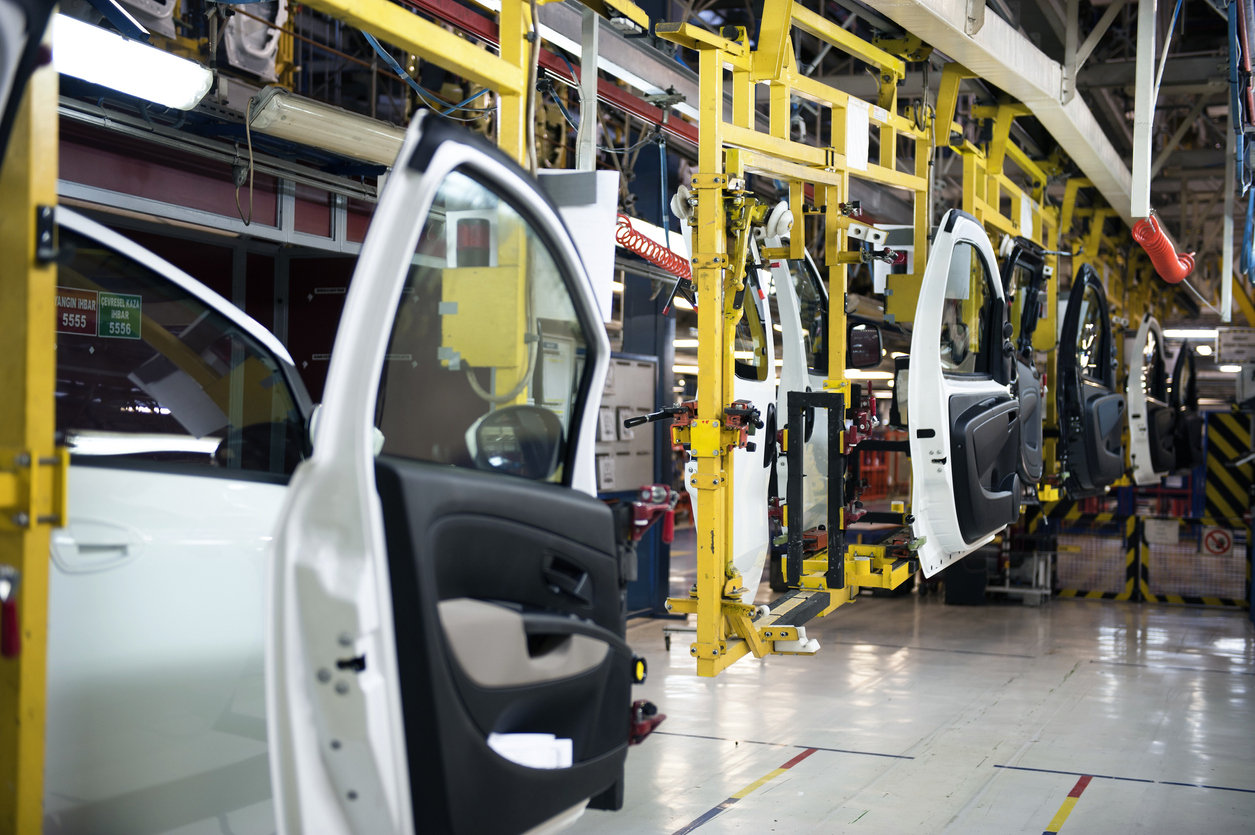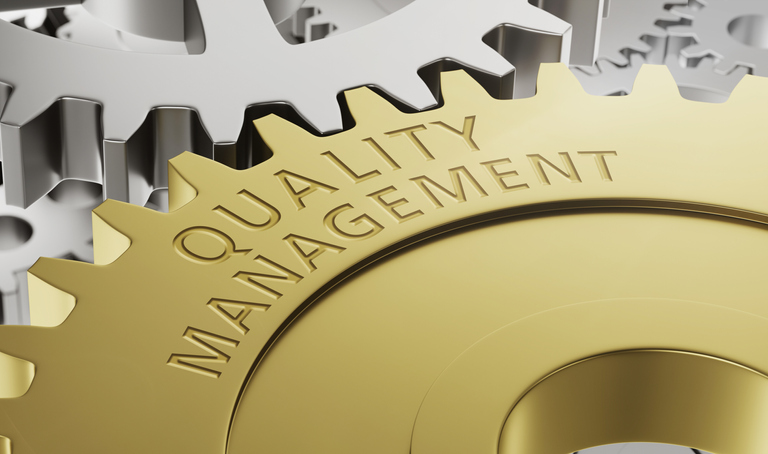OEM original parts or aftermarket: these are the differences

If the car is defective, there are various options for procuring replacement parts. It is not unusual for potential buyers to come across terms such as OEM parts and aftermarket parts. But what do the two designations mean, and how do the respective spare parts differ? This and everything important about OEM car parts and aftermarket parts can be found here in our article. We also explain the advantages and disadvantages of the two types of spare parts.
Read more: Advantages and disadvantages of new and used car parts
OEM spare parts versus aftermarket parts
The difference between aftermarket and OEM is in fact quickly explained:
OEM parts are produced by the original suppliers who also supply the car manufacturers. These are therefore parts in original equipment quality. The term OEM comes from the English term Original Equipment Manufacturer.
Aftermarket parts, on the other hand, are spare parts that are reproduced by third-party manufacturers. The quality of aftermarket parts does not necessarily have to be worse. However, a very cheaply manufactured spare part can of course have defects in terms of quality and fit. These imponderables occur less often when buying OEM parts, which is a real advantage.
Some manufacturers of original spare parts divide the various replacement parts again into OE parts and OEM parts. OE parts are classified as spare parts that are manufactured for several car manufacturers and fit different cars. The OEM parts, on the other hand, are manufactured exclusively for a specific car manufacturer.
To buy OEM parts
OEM parts from the original parts manufacturer are ideal for restoring your faulty vehicle. Because they are original parts, as they were when the car was manufactured, repairs usually go smoothly. When you buy OEM parts, you are offered many advantages, but also some disadvantages.
Advantages when buying OEM parts (original parts)
- Exact fit and quality: Original parts in OEM quality correspond in terms of their specifications to the respective parts installed on the vehicle. In the event of a repair, OEM parts and the defective part on the car can simply be exchanged for each other. The quality of the OEM car parts is consistent and usually corresponds to the part originally installed on the car.
- Part numbers: OEM car parts are provided with uniform and fixed part numbers. This is the so-called OE part number, which is sometimes also referred to as the OEM number. With the help of the part number, it is possible to find suitable parts for each vehicle.
- Warranty: Manufacturers of OEM parts often provide a warranty on their products. If the purchased spare part breaks unexpectedly within a certain period of time after purchase, warranty claims exist, such as a free replacement or repair.
Disadvantages when buying OEM parts (original parts)
- Availability: OEM parts are not always available immediately, for example when supply chain issues arise. Not all dealers have a large stock of OEM quality parts, so the parts have to be ordered first. For an older car, sometimes there are no OEM car parts available at all.
- Price: New original parts are among the most expensive car parts on the market. Here you sometimes pay not only for the car part itself, but the prices are also measured by the good name of the manufacturer. However, the higher purchase price also includes costs for the warranty and the service of the parts manufacturer.
- Competition: OEM parts are not offered by all dealers and online retailers. Since original car parts are, among other things, expensive to buy, many suppliers do not stock such parts. This not only reduces the choice of dealers, but as a consequence hardly any special offers arise with so little competition.
.
Buy Aftermarket Car Parts/Aftermarket Parts
Aftermarket parts offer the possibility to repair the car without using original car parts. The aftermarket parts are approximately the same as the original part, but variations in production may well occur due to different production facilities. If you buy aftermarket car parts, this will result in advantages as well as disadvantages.
Aftermarket Parts – Advantages
-
- Prices: Aftermarket parts for the car are often much cheaper to buy than original parts. Sometimes the producers of aftermarket parts have cheaper production possibilities, and they also save costs in development. Furthermore, an expensive brand name does not have to be paid for aftermarket parts in contrast to original parts.
- Selection: Aftermarket parts are available in great variety on the market. The different manufacturers of the aftermarket parts also allow a choice between different quality levels or manufacturing types.
- Availability: Aftermarket car parts are often readily available. Many dealers have the parts directly in stock, and they are also constantly being replenished. Even for an older vehicle, there is often a good selection of aftermarket parts.
Aftermarket Parts – Disadvantage
- Quality: The quality of aftermarket parts is not necessarily inferior to OEM parts. However, differences in the characteristics and fitting accuracy of aftermarket parts are not uncommon due to different suppliers and manufacturing facilities.
- Counterfeits: In the area of aftermarket products, there are always suppliers who intentionally offer inferior products. If safety-relevant wear parts such as brakes do not meet the manufacturer’s specifications, they can quickly become a danger to your safety.
- Product designations: Unlike original parts, aftermarket parts do not always have uniform product designations or do not correspond to the specified OE numbers. Therefore, choosing the right part for aftermarket products can be more difficult.
Buy the right OEM part at Autoparts24
Do you want to enjoy the advantages of OEM car parts without paying too much? Then buying used original parts for your car is a good idea. Used spare parts of the original manufacturers offer advantages such as accuracy of fit and consistent quality, but are significantly cheaper than new parts.
At Autoparts24 you can find cheap original spare parts for almost every vehicle. The used parts are removed by car recycling in the course of environmentally friendly car disposal. After thorough examination, the used original parts will be offered for sale.
You can find the right spare part quickly and easily thanks to the convenient search at Autoparts24. Simply enter the make and model of your car in the search mask, or alternatively use the license number. Searching by key number offers a high degree of certainty that you will find the right car part. Before purchase, you should be sure to compare the OE part number of the defective car part with that of the spare part.
OEM car parts manufacturing: the key components of the sector
Today, a car is made up of numerous different components. The OEM car parts installed at the factory comply with defined standards. However, not all car parts are manufactured by the car manufacturers themselves. Find out now everything you need…
Read more
Used parts: How to check the quality of used car parts
If the car is broken, it can be repaired cheaply thanks to inexpensive used parts. However, all spare parts from car recycling should be comprehensively checked. What has already been done by the car recycling company when you buy online,…
Read more
Top guides
- Injection system in the car explained simply - parts and function of the injection...
- Maintenance and repair of electric cars: what can your normal garage do?
- Increasing performance with chip tuning: benefits, risks and tips
- Guide: Computer systems and software in your car
- Which electric car parts need repair or replacement most often?
- What is a solid-state battery for electric cars?
- All about engine sensors: from combustion engines to electric cars
- Increase the range of an electric car: How every electric car gets further
- Electric car battery life: How to extend the life of the battery
- What is the compression of a car engine?
- This is the cubic capacity of a car engine
- Internal combustion engine valves: function, defects and repair
- Core components of the internal combustion engine - parts and functions
- Engine lubrication in cars: components, function and defects
- The environmental impact of manufacturing new car parts
- All about pollutant classes and their role in environmental protection
- Engine overhaul: What is an engine overhaul and how much does it cost?
- OEM car parts manufacturing: the key components of the sector
- Understanding engine power - insight into the technology of the car engine
- The steering system of the car - structure and operation
- The car's braking system - structure, parts and function
- Engine types in the car: V-engine, in-line engine and boxer engine explained
- 8 tips before buying a used electric car
- Distinguish OEM parts, aftermarket and counterfeit car parts
- The EPC indicator light is on or flashing: What to do?
- Master brake cylinder: function, defect detection and repair
- OEM car parts for hybrid and electric cars
- Used youngtimer and classic car parts - the best tips
- Cruise control: Function and repair of the cruise control system in the car
- Exhaust system: Everything you need to know about parts and function of the exhaus...
- Locking system: security and reliable locking on the car
- The engine's air intake system - parts, function and replacement
- Brake caliper defective? How to replace it yourself
- Fuel system: parts of the fuel supply from the tank to the cylinder
- Air conditioning system: function and components of your car air conditioning syst...
- The clutch: structure and function explained simply
- Detecting and replacing a defective fuel pump
- Surprised? So many pumps work in your car
- The most common causes of a defective electric car
- The 6 most important safety components of your car
- Identify and repair a defective starter in a flash
- 5 common chassis problems and how to fix them
- 10 unknown car parts that many drivers do not know about
- Engine cooling: function and important components of the cooling system
- Differences between petrol and diesel engines
- All-wheel drive: How the mechanics and components of all-wheel drive work
- Engine control unit car: Everything about components and functioning
- Defective engine control unit: causes, symptoms and repair
- HP vs. torque: What is the difference between power and torque?
- EV motors basics: How are they built, how they work and differ from combustion eng...
- The chassis: overview and function of all suspension components
- Used electric car parts: What to look out for
- The importance of the chassis number when buying used car parts
- ABS pump defective? Function, repair and replacement
- Injection nozzle defective? Diagnosis, cleaning and changing the injection nozzles
- Alternator defective? What symptoms occur and when to change the component
- Water pump defective? Symptoms and how to repair or change it
- Steering gear defective? What are the symptoms and when should the component be re...
- Lambda sensor defective? What are the symptoms and can I clean the sensor?
- Defective air conditioning compressor - what are the symptoms and when should the ...
- Intake manifold defective? Replace gasket or clean manifold?
- Exhaust manifold leaking? Symptoms of a defective exhaust manifold or gasket and w...
- Turbocharger defective? Repair or change?
- Servo pump defective? What symptoms occur and when you should change the part
- Clutch broken? - These symptoms indicate a defect in the clutch
- Common problems and repair of defective drive shafts
- Causes of engine noise and what to do about it?
- What can car diagnostic devices do and do I need an OBD scanner?
- When and how to replace brake discs and brake pads
- Brake warning lamp lights up - causes and what to do?
- EGR valve defective: Avoid engine problems and clean EGR valve
- Improve fuel consumption: How your car uses less fuel
- Squeaking brakes: Why brakes squeak and how to get rid of it
- Safely jacking up a car: How to jack up a car using a jack and jack stands
- How a defect in the muffler becomes noticeable and how it is replaced
- E-car motor: These electric car parts you can replace yourself
- Engine overheated: What you should do if the engine overheats
- Engine check lamp lights up: What you should do as a motorist
- The engine code: What does the code mean and where can I find it on the car?
- Tools for car repair: These 10 tools you should own
- Car repair mistakes: These are the 7 most common car repair mistakes
- The gearbox code: What does the code mean and where can it be found on the gearbox...
- Used parts: How to check the quality of used car parts
- Vehicle transmission: What is the difference between manual and automatic transmis...
- Mileage: This is how mileage affects used spare parts
- Car recycling: What happens to the car when it is recycled?
- OEM original parts or aftermarket: these are the differences
- Advantages and disadvantages of new and used car parts
- Starting problems? Top 9 reasons why your car does not start
- What’s that smell from my car? Top causes and cures
- Advantages of shopping scrap car parts online vs. going to the local breaker yards...
- 10 most frequently purchased car parts from car breakers/junkyard
- Important car parts and their function
- Common car engine problems: Diagnosing, Troubleshooting and Fixes
- Best tips for setting up your own home car workshop
- 7 Car parts replacements and repair tasks you should not do yourself
- DIY Car Maintenance and Repair Tasks
- Guide: How to Maintain and Protect Your Car Engine
- Best practices for Engine Rebuild
- Common Causes of Rear Differential Noise, troubleshooting, and how fix it
- Common Causes of power steering noise and how fix it
- Your Guide to Car Engine Components and Functions
- Licence plate and VIN information
- Top 10 of the most popular brands in second-hand autoparts
- France is just so cool

